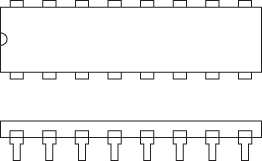1. See application package.
2. In Ada, a self-contained collection of entities (data objects and procedures) that are available for other parts of a program to use. A package consists of two parts that can be separately compiled: its specification and its body. The specification provides the public information about the entities that the package makes available, in the form of declarations of constants, variables, and data types, and procedure headers. It may also contain a private part giving further information about types and constants that is needed by the compiler but not by a programmer using the package. The package body contains the procedure bodies for the procedures that form part of the package, together with local variables and types that these procedures may need. The separation of specification and body means that the implementation of the procedures is hidden from the users, thus a package is a realization of an abstract data type.
Similar features are found in other languages, particularly Modula 2: here the term module is used in preference to package. In Modula 2 a module comprises a definition part and an implementation part, corresponding to the specification and body of the Ada package. The main difference is that the definition part of a module contains declarations of all the objects required by the module, together with an export list specifying which objects are visible outside the module.
The protective shell of material in which an integrated circuit and its electrical contacts are encapsulated. There are a range of different package shapes and sizes, and different numbers and patterns of connecting pins. Some common types include:
ball grid array (BGA)
dual-flat no-leads package (DFN)
dual in-line package (DIP)
leadless chip carrier (LCC)
pin grid array (PGA)
plastic leaded chip carrier (PLCC)
quad-flat no-leads package (QFN)
The very common DIP type is here illustrated for a chip with 16 pins. This DIP16 chip has a notch at one end and the convention for numbering the pins is anticlockwise, starting from the notch.

Package
- hypothalamus
- hypotheca
- hypothecation
- hypothermal
- hypothesis
- hypothesis test
- hypothesis testing
- hypothetical
- hypothetical imperative
- hypothetical syllogism
- hypothetico-deductive method
- hypothyroidism
- hypotonic
- hypotonic solution
- hypovalent molecule
- hypoxia
- Hyppolite, Jean-Gaston (1907–68)
- Hypsilophodontidae
- Hypsithermal
- hypsochromic shift
- hypsographic curve
- hypsography
- hypsometer
- hypsometric curve
- Hyracotherium